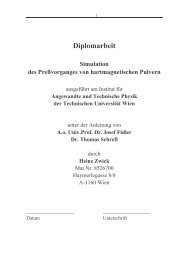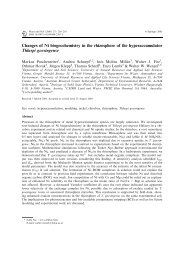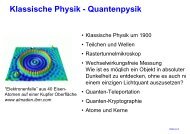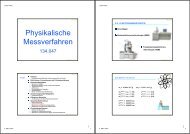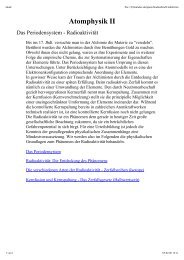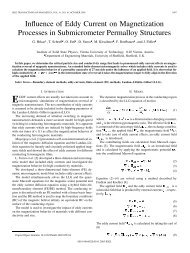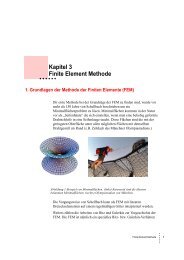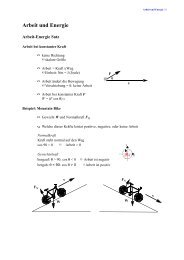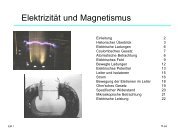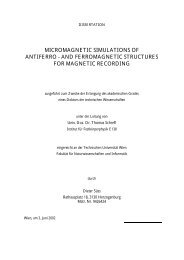Read Back Signals in Magnetic Recording - Research Group Fidler
Read Back Signals in Magnetic Recording - Research Group Fidler
Read Back Signals in Magnetic Recording - Research Group Fidler
You also want an ePaper? Increase the reach of your titles
YUMPU automatically turns print PDFs into web optimized ePapers that Google loves.
<strong>Read</strong> Head Design<br />
On the other hand the signal field decays with distance from the record<strong>in</strong>g layer (see Section<br />
3.4) and therefore a higher effective (average) signal field is reached for smaller sensor<br />
heights. Thus a compromise must be found. Usual width-to-height ratios are between 1.2 and<br />
1.5.<br />
5.1.2 Hard Bias<br />
To align the magnetization of the free layer hard magnets are used (see Figure 2.4). Usually<br />
the GMR element is placed between two hard magnets, whose static magnetic field effects the<br />
perpendicular alignment <strong>in</strong> respect to the p<strong>in</strong>ned layer. The permanent magnetic fields also<br />
<strong>in</strong>fluence the magnetization of the p<strong>in</strong>ned layer. Therefore the bias<strong>in</strong>g field for the p<strong>in</strong>ned<br />
layer has to overcome the hard bias field.<br />
5.1.3 Exchange Bias<br />
Exchange bias is based on the exchange anisotropy, which was discovered by Meiklejohn and<br />
Bean 50 years ago [32]. They <strong>in</strong>vestigated small Co particles coated with its<br />
antiferromagnetic oxide CoO. A field cool<strong>in</strong>g process, i.e. heat<strong>in</strong>g up above the Néel<br />
temperature and cool<strong>in</strong>g under apply<strong>in</strong>g a magnetic field, leads to a shift of the hysteresis<br />
loop, which is shown <strong>in</strong> Figure 5.1. The exchange bias effect can be characterized by the<br />
displacement of the hysteresis loop, denoted by H ex .<br />
Figure 5.1: The shift of the hysteresis loop after a field cool<strong>in</strong>g treatment of a<br />
ferromagnetic/antiferromagnetic system [19] and the temperature dependence of the<br />
exchange bias field for NiFe(4-8nm)/Cu(2.2nm)/CoFe(2nm)/IrMn(15nm) sp<strong>in</strong> valves with<br />
different free layer thicknesses [33].<br />
60



